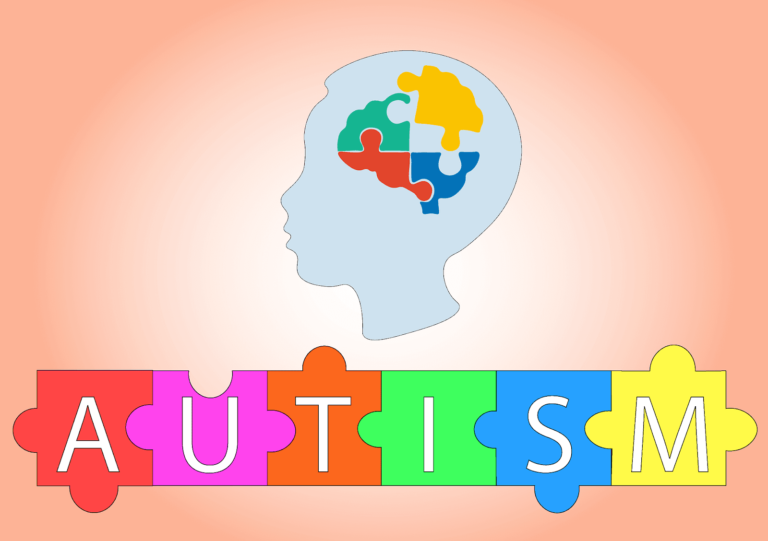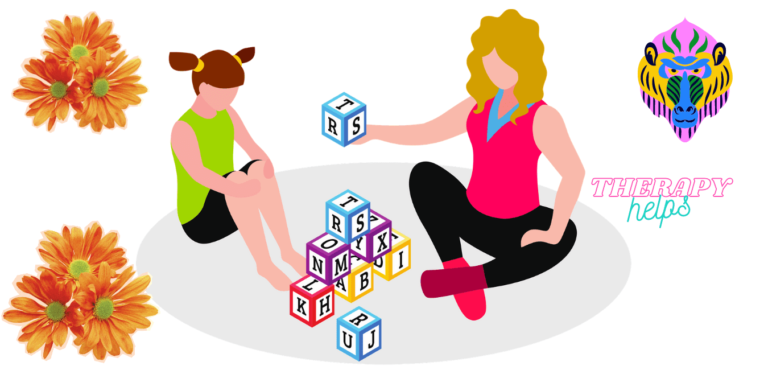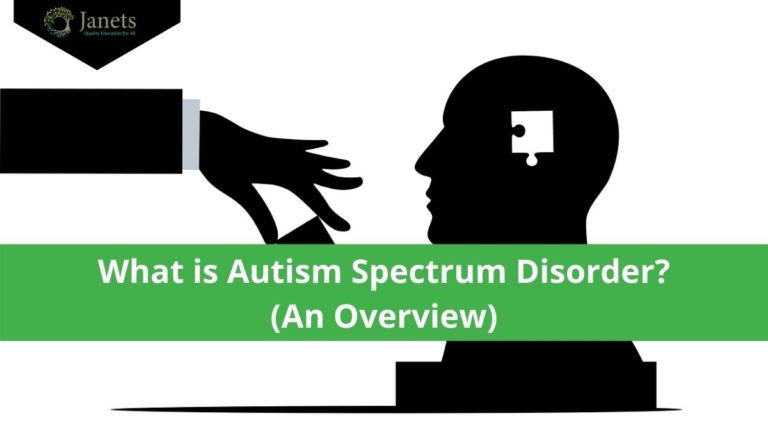Autism Spectrum Disorder (ASD) is an intricate state of human condition while it indicates the difficulties of having social interaction, speech and nonverbal communication, and restricted/repetitive behaviors. ASD affects different people in different ways. There is no specific outline of people’s character that defines the ASD, but people with ASD communicate, behave, interact and learn in different ways than normal people. Learning, thinking and action taking of people with ASD varies from person to person. While some people suffering from ASD need more help and others need less. According to the National Autistic Society, One in 100 people are on the autism spectrum and there are around 700,000 autistic adults and children in the UK.
What is Autism Spectrum Disorder (ASD)?

Autism Spectrum Disorder (ASD) is a complex condition that includes people with communicating and behaving problems. People having ASD face difficulties learning other people’s emotions and acting according to the situations. This also leads them to be unable in expressing themselves either with speech, gestures or facial expressions. People with ASD also face problems in learning. Sometimes they are unusually good at art, music or in specific areas of knowledge development and sometimes they are unevenly gifted with common learnings. Autism complexity also tells us that symptom of ASD varies person to person and there is no specific reason that has been identified behind ASD but some genetic research has indicated that as unusual growth of brain’s or disrupted brain growth could be the reason and these disruptions may be the result of defects in genes that control brain development and regulate how brain cells communicate with each other.
According to the Centers for Disease Control and Prevention (CDC), one in 59 children is estimated to have autism. Autism spectrum disorder is also three to four times more common in boys than in girls, and many girls with ASD exhibit less obvious signs compared to boys. Autism is a lifelong condition. However, many children diagnosed with ASD go on to live independent, productive, and fulfilling lives.
Types of Autism Spectrum Disorder (ASD)
The Diagnostic and Statistical Manual of Mental Disorders (DSM ) is published by the American Psychiatric Association (APA) and is used by clinicians and physicians to diagnose a variety of psychiatric disorders.
The fifth and most recent edition of the DSM was released in 2013. The DSM-5 currently recognizes five different ASD subtypes, or specifiers. These are-
- With or without accompanying intellectual impairment
- With or without accompanying language impairment
- Associated with a known medical or genetic condition or environmental factor
- Associated with another neurodevelopmental, mental, or behavioural disorder
- With catatonia
From these criteria, this is not obvious one autistic person can have one of these above-mentioned specifiers. One can have several specifiers and can be diagnosed with.
Characteristics of Autism Spectrum Disorders (ASD)
Characteristics of ASD differs from person to person in the combination of severity and behavior of the symptoms. The severity of ASD can range from mild to severe and this can change over time.
1. Behavior and communication problems
ASD diagnosed children face difficulties in behaving and communicating factors like eye contact, facial expression, and limitation in developing, understanding relationships.
2. Limited access to action and repetitive patterns of behaviour
Physical activities that include hand-flapping and toe-walking, playing with toys in an uncommon way (such as lining up cars or flipping objects), speaking in a unique way (such as using odd patterns or pitches in speaking or “scripting” from favorite shows), having significant need for a predictable routine or structure can be taken under consideration of this limited access to action and repetitive patterns of behaviour.
Level of Autism Spectrum Disorder (ASD)
The level of ASD can be ranged according to a person’s strength and limitations in communication, relationship building, adapting to new situations, expanding beyond restricted interests, and managing daily life. These indicators show us how much support an autistic person needs.
For instance- level 1 indicates that the person needs relatively less support and level 3 indicates that this person needs a great deal of help from others for managing his life.
Level 1 – Requiring Support
In this kind of level of autism, the person is able to manage his daily life on his own but he faces difficulties in understanding other people’s behaviour or he is unable to express his feelings. In most cases, the person can not perform the right act at the right time. He is very willing to have friends but unsuccessful in most cases.
Level 2 – Requiring Substantial Support
Level 2 autistic people mostly struggle with the nonverbal forms of communications. They are sensitive to focus changing behaviour, and if someone changes their focus they get very upset. They have narrow interests in repetitive behaviors and whenever they speak they mostly try to complete the whole story with simple sentences.
Level 3 – Requiring Very Substantial Support
Autistic people with level 3 symptoms are the very severe group of affected people. At this level, people generally struggle in verbal and nonverbal communications. They are very engaging in repetitive behaviours. They have very little access to speak intelligibly. In the responding category, they are responsive to the very direct social approaches.
What is high-functioning Autism?
If we want to define high-functioning autism, first what you need to know is high functioning autism is an unofficial medical diagnosis. High- functioning Autistic people are those who are in the milder end of the spectrum. That means They are initially able to do their daily life activities. As ASD is a neurodevelopmental disorder, in this phase of autism people face mostly interactive and communicative problems.
Autism Spectrum Disorder (ASD) in Adults
In recent years, autism in adults is increasing drastically. Sincerely Autism Spectrum disorder (ASD) is a disease that can be seen from the early childhood of a baby. Unusual development of the brain leads to this disorder. But now it is becoming common for adults. For instance, In adulthood people can go through a lot of mental trauma that can move them towards ASD. Unusual neural development can happen at any time and at any age of people.
Symptoms of Autism Spectrum Disorder in Adults
- Difficulty interpreting what others are thinking or feeling.
- Trouble interpreting facial expressions, body language, or social Approaches.
- Difficulty regulating emotion.
- Trouble keeping up a conversation.
- Inflexion that does not reflect feelings.
- Difficulty maintaining the natural give-and-take of a conversation; prone to monologues on a favorite subject.
- Tendency to engage in repetitive or routine behaviours.
- Only participates in a restricted range of activities.
- Strict consistency to daily routines; outbursts when changes occur.
- Exhibiting strong, special interests.
Can Adults Get Diagnosed on the Autism Spectrum?
Autism diagnosis is usually taken out at the early stage of autism which basically starts from childhood. Maybe you are thinking, what if you find yourself autistic at an adult age?
In your adult age, you can manage yourself some way or you can hide the symptom of being autistic but it would be very generous to share your symptom of autism with the prefered doctor. Doctors can find the checklist of child autism diagnosis and can find something out for you. The path for you to be in the diagnosis process may not be perfect or even easy regardless of the way where it takes you. This will help them to navigate your day to day routine and behaviour.
What causes ASD?
Researchers accept that both genetics and climate probably play a part in ASD. There is a worrying matter of fact that ASD has been expanding in late a long time without full clarification concerning why. Scientists have recognized various qualities related to the issue. Imaging studies of people with ASD have discovered contrasts in the improvement of a few regions of the brain. Studies propose that ASD could be a consequence of disturbances in ordinary brain development. These interruptions might be the consequence of imperfections in qualities that control mental health and manage how people communicate with each other.
ASD is more common in the prematurely born babies. Environmental variables may likewise play a part in gene function and development, however, no particular natural causes have yet been recognized. The hypothesis that parental practices are liable for ASD has for quite some time been disproved. Different investigations have shown that vaccination for infectious disease doesn’t expand the danger of ASD in general people.
Symptoms of Autism Spectrum Disorders
Autism Spectrum Disorder is a very common disease. It changes the symptom with every individual’s behaviour. There are no common sets of definite symptoms for all types of Autism. According to the level of ASD symptoms get changed and even with different surroundings and same types, symptoms for ASD varies. Centers for Disease Control and Prevention has identified some of the possible red flags for identifying ASD. These are-
- Not respond to their name by 12 months of age
- Not point at objects to show interest (point at an airplane flying over) by 14 months
- Not play “pretend” games (pretend to “feed” a doll) by 18 months
- Avoid eye contact and want to be alone
- Have trouble understanding other people’s feelings or talking about their own feelings
- Have delayed speech and language skills
- Repeat words or phrases over and over (echolalia)
- Give unrelated answers to questions
- Get upset by minor changes
- Have obsessive interests
- Flap their hands, rock their body, or spin in circles
- Have unusual reactions to the way things sound, smell, taste, look or feel
Social Skills
- Does not respond to name by 12 months of age
- Avoids eye-contact
- Prefers to play alone
- Does not share interests with others
- Only interacts to achieve the desired goal
- Has flat or inappropriate facial expressions
- Does not understand personal space boundaries
- Avoids or resists physical contact
- Is not comforted by others during distress
- Has trouble understanding other people’s feelings or talking about own feelings
Communication
- Delayed speech and language skills
- Repeats words or phrases over and over (echolalia)
- Reverses pronouns (e.g., says “you” instead of “I”)
- Gives unrelated answers to questions
- Does not point or respond to pointing
- Uses few or no gestures (e.g., does not wave goodbye)
- Talks in a flat, robot-like, or sing-song voice
- Does not pretend in play (e.g., does not pretend to “feed” a doll)
- Does not understand jokes, sarcasm, or teasing
Unusual Interests and Behaviors
- Lines up toys or other objects
- Plays with toys the same way every time
- Likes parts of objects (e.g., wheels)
- Is very organized
- Gets upset by minor changes
- Has obsessive interests
- Has to follow certain routines
Autism Spectrum Disorder Treatment

Autism Spectrum Disorder treatment is given based on the levels, conditions and types of the ASD. As per level, treatment is different in providing assistance.
Potential treatment is given below-
1. Speech therapy
Difficulty in speaking is one of the common issues that ASD creates. Speech therapy can help to communicate and share the actual feelings.
2. Physical therapy
Some people with ASD face difficulty in walking, running or even making active any muscles of the body.
3. Occupational therapy
Occupational therapy can enable someone to move the individual parts of the body
4. Sensory training
Sensory training is for those who are sensitive to sound, lights and touch.
5. Applied behavioural analysis
This technique helps to boost positive attitudes.
6. Medication
There is no definite type of medication but sometimes problems like depression and high energy can be minimized by using medication.
Closing Notes
Autism Spectrum Disorder is one of the most diversified diseases. This disease changes its behaviour from time to time and person to person. If you want to know and learn more about this complicated disease you must want to have a professional course that can lead your skill up to the mark. So what are you waiting for?





 LOGIN/Sign up
LOGIN/Sign up




